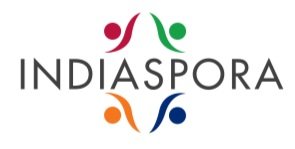158th Birth Anniversary: Celebrating Anandibai Joshi, the First Indian Woman to Study Medicine in the United States
In the 1880s, when India was reeling under British rule and women were expected to remain confined to their homes, eighteen-year-old Anandi refused to budge from her decision — to go to America and study medicine.
Her decision was mocked by her townsfolk in the erstwhile Bombay Presidency of India. ‘How can an upper-caste Brahmin woman even think of taking the forbidden path?" they wondered.
At the age of eighteen, Anandi was already nine years into her marriage with Gopal Rao Joshi, a progressive postal clerk. She got full support from him to pursue her dreams of studying western medicine after their first child died due to a lack of proper treatment. Back in those times, women who showed an inclination to treat patients were encouraged to take up midwifery. Though they could enroll themselves in a doctor’s course in Chennai, the chauvinistic professors taught female pupils half-heartedly.
As an upper-caste Hindu woman, the only way to get properly educated in the field of medicine was to travel abroad. Christian women still managed to find support in the British Raj, but the educational and career dreams of Hindu women were public scandals and nipped in the bud.
Despite wide protests, stone pelting at the postal office where Gopal Rao worked, and abusive comments, the couple moved ahead with Anandi’s plan – of pursuing medicine abroad and come back fully trained to successfully treat patients back home.
One gap that Anandi was keen on addressing was the need to help the European and native women who were averse to being treated by a male doctor.
Anandi and Gopal sought the help of Presbyterian missionaries. The editor of the Missionary Review published Anandi’s story of how she was being ridiculed for wanting to study medicine and her request for help.
Much to Anandi’s luck, a New Jersey resident named Theodocia Carpenter came across the request while flipping through the pages of the journal during her dentist’s appointment, and wrote back offering help.
Anandi and Theodocia’s friendship ensued over letters. When Anandi finally reached New York in 1883, she was welcomed by her loving aunt Theodocia.
From her host’s home, Anandi wrote a letter to the Woman’s Medical College of Pennsylvania, Philadelphia, one of the world’s first women’s medical colleges founded in 1850. Today, the institution is part of the Drexel University College of Medicine, Philadelphia.
The institution attracted aspirants from many countries. Anandi’s qualifications in English, arithmetic, and history and her ability to converse in seven languages did not give her a strong chance of admission, but her intent certainly did.
Looking at her purpose of studying medicine to render services to the suffering women of her country who preferred dying to being treated by a male physician, the college authorities granted her the chance to study there. A thrilled Anandi started her medical education at nineteen.
Anandibai Joshi with her batchmates Kei Okami and Sabat Islambooly of Women's Medical College of Pennsylvania
She turned out to be one of the sincerest students. Once, she impressed her instructor by being the only one in the class to sit through the autopsy of an infant while his cadaver was being dissected.
When Anandi finally received her degree in medicine in 1886, the dean of the Woman’s Medical College of Pennsylvania was very happy. He informed Queen Victoria, the Empress of India, about Anandi’s accomplishments, and the Queen sent her a congratulatory message. The Albert Edward Hospital in the princely Indian state of Kolhapur expressed the desire to appoint Anandi as physician-in-charge of the women’s wards and also wanted her to train female students to become general practitioners.
However, the story of triumphs met a sad ending. Before she could return to India, Anandi contracted tuberculosis — a deadly disease that did not have much of a cure in those times. It worsened in America’s frigid winters. Anandi returned to India in late 1886, receiving a grand welcome.
The weak and frail doctor even started practicing at Albert Edward Hospital, rising in fame for her determination and hard work to make her dreams come true. But fate had some other plans for the go-getter.
Just a few months after returning to India, a month short of her twenty-second birthday, Anandi, who was born on March 31, 1865, breathed her last on February 26, 1867, in her mother’s arms.
India mourned her death. Her family and Theodocia Carpenter, the lady who loved Anadi as her own niece, were distraught. Upon Theodocia’s request, Anandi’s ashes were sent to America. Theodocia placed the ashes at the Poughkeepsie Rural Cemetery, her family cemetery in New York. The headstone aptly summarizes Anandi’s life: Anandibai Joshi MD (1865–1887), a Hindu Brahmin girl and the first Indian woman to receive a degree in medicine abroad.
Though Anandibai died an untimely death, she was the trailblazer of women’s education abroad and is still an inspiration for all the female Indian-origin doctors. In her honour a 34.3 kilometer-diameter crater on Venus is named ‘Joshee’.
The author is a Sri Lanka based Indian origin journalist with several books to her credit. In her career of more than two decades she has covered several beats including positive stories and news of the Indian diaspora from across the world.



